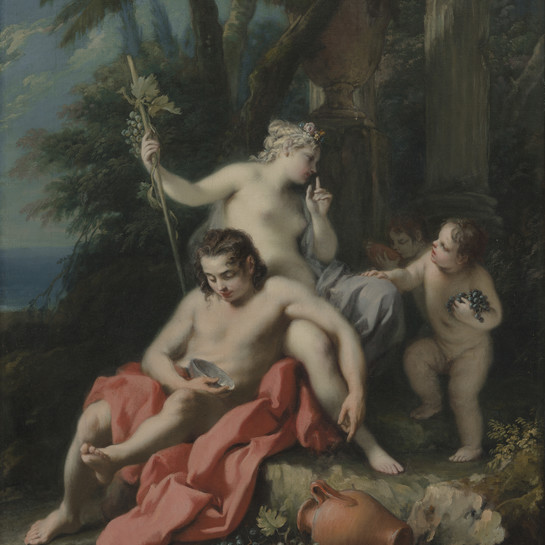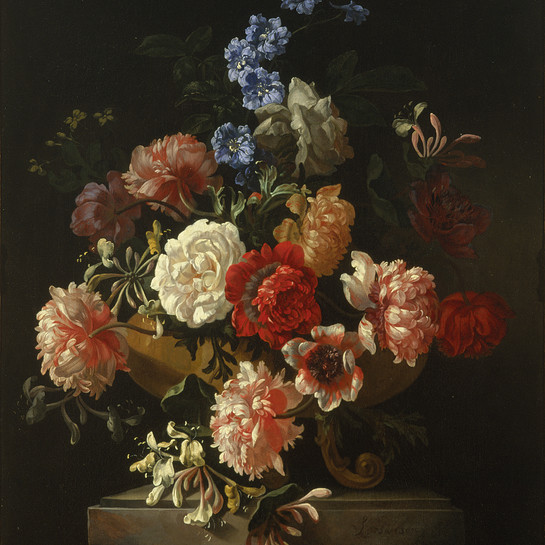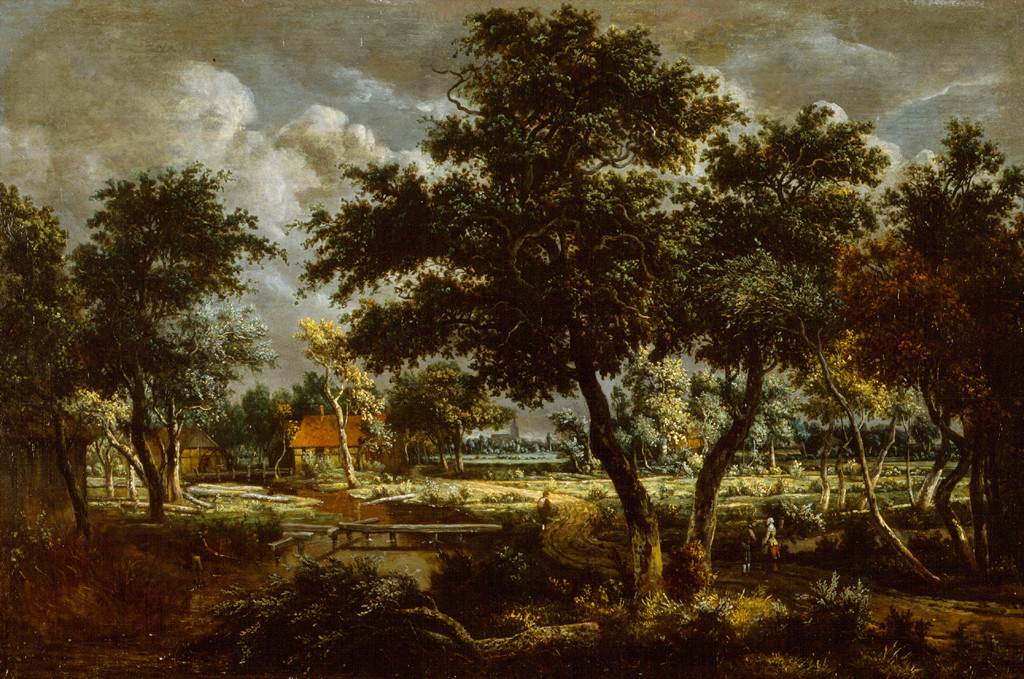Henri Fantin-Latour
France, b.1836, d.1904
Panier de Raisins
Basket of Grapes
- 1893
- Oil on canvas
- Frank White Bequest, 2001
- 850 x 912mm
- 2008/057
Tags: baskets (containers), bowls (vessels), flowers (plants), fruit, still lifes
Henri Fantin-Latour’s Panier de Raisins evokes the abundance of midsummer and an atmosphere of unhurried pleasure and respite. Every June from 1878 onwards, once the clamour of the Paris Salon had subsided, Fantin-Latour and his wife Victoria (née Dubourg) closed their city apartment and headed to rural France, and a small country house in Lower Normandy, to paint until summer’s end. Henri Fantin-Latour sent the best of his new still-life paintings to his dealer in London, where they found a ready audience.Fantin-Latour produced over 800 fruit and flower paintings between 1862 and 1896, nearly all of which sold in England – the paintings for which he is most highly regarded were unknown to his countrymen. As the painter Jacques-Émile Blanche protested in 1919, “For too long, they were not found in France; Fantin was revealed to us only through rare portraits and fantasies.”
(Persistent encounters, March 2020)
Exhibition History
New Dawn Fades, 10 November 2018 – 23 February 2020
Although he exhibited alongside the Impressionist artists at the Salon de Refusés in 1863, Fantin-Latour was very much an academic painter who continues to be widely admired for his still-life paintings of flowers and fruit. He had a studio in Paris but would travel with his wife and fellow painter Victoria Dubourg to their country cottage at Buré in Lower Normandy during the summer months, where their garden provided a wide choice of flowers and fruit to paint. Fantin-Latour enjoyed painting in a studio environment, hence his liking of still-life subjects, where he had more control over conditions such as lighting and compositional arrangements. He once said he had “…a horror of movement, of animated scenes, and the difficulty of painting in the open air with the sun and the shade.”
The Weight of Sunlight, 15 September 2017 – 19 August 2018
Every June from 1878 onwards, once the clamour of the Paris Salon had subsided, Henri Fantin-Latour and his wife Victoria (née Dubourg) closed their Paris apartment and headed to the countryside, a small house with a garden at Buré, Lower Normandy, where they painted until the summer’s end. From Paris, Fantin-Latour shipped his most successful new fruit and flower paintings to art dealer friends in London, Edwin and Ruth Edwards, whose records show that they sold this work (likely to its donor’s parents). Edwin Edwards had supported Fantin-Latour when Paris was in turmoil in 1871 at the close of the Franco-Prussian war, clearing his studio of still-life paintings and drawings to find buyers in England. Subsequent demand from English collectors offered a regular income for Fantin-Latour, whose still-life paintings – now his most prized works – remained all but unknown to his countrymen. As the painter Jacques-Émile Blanche complained in 1919, ‘For too long, they were not found in France; Fantin was revealed to us only through rare portraits and fantasies.’
Treasury: A Generous Legacy 18 December 2015 – 4 December 2016
Henri Fantin-Latour’s Panier de Raisins (Basket of Grapes) evokes the pleasure and abundance of the French country- side in midsummer and is recognised as one of the most significant European works in the collection.
Panier de Raisins arrived unexpectedly through the bequest of Frank White (1910–2001), a Hororata sheep and cattle farmer and arborist who came to New Zealand from England in 1927 to study farming at Canterbury Agricultural College (now Lincoln University). White served in North Africa and the Mediterranean during World War II and never married. He left 12 paintings to the Gallery and also generously left his farm to Lincoln University for training purposes.
Fantin-Latour was very much an academic painter who mainly produced still-life paintings of flowers and fruit. He had a studio in Paris but many of his paintings were done at his wife’s country cottage at Buré, in Lower Normandy, where the garden provided a wide choice of flowers. Fantin-Latour preferred to paint in a studio environment where he had more control over conditions. He once said he had “a horror of movement, of animated scenes, and the difficulty of painting in the open air with the sun and the shade.”
Fantin-Latour was born in Grenoble but the family moved to Paris in 1841 and he joined a drawing school. He was admitted to the École des Beaux-Arts in 1854 but only lasted three months. For the rest of his artistic education he studied paintings in the Louvre. Fantin-Latour exhibited regularly at the Paris Salon from 1861 but he was also included in the Salon des Refusés in 1863. He was awarded the Legion of Honour in 1879.
(Label date unknown)














